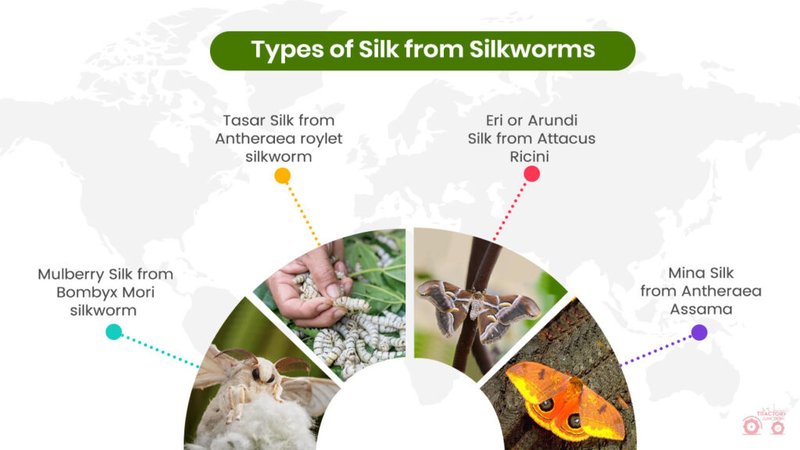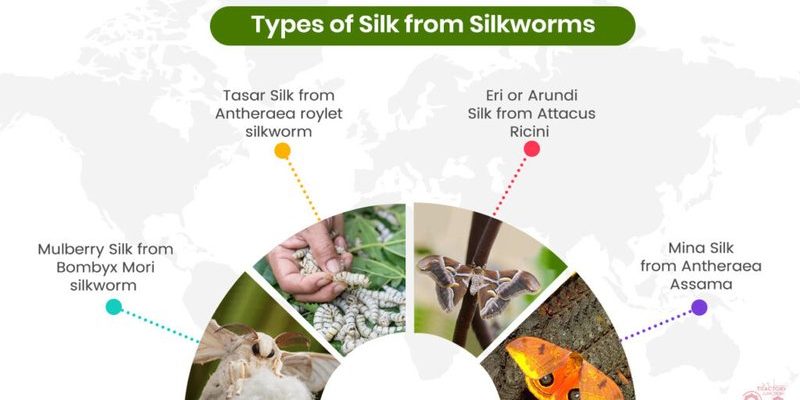
Imagine your garden like a hungry child. You wouldn’t feed that child junk food, right? You want to give it the good stuff to help it grow strong and healthy. Organic fertilizers work the same way—they provide plants with nutrients without the harmful chemicals found in many store-bought options. So, adding silkworm waste could be like giving your plants a nutritious meal. But let’s dig deeper into whether this is fact or fiction.
What is Silkworm Waste?
Silkworm waste is essentially the leftover material that comes from raising silkworms. When silkworms mature and produce silk, they leave behind droppings, which are packed with nutrients. This waste consists of not just the excrement but also leftover mulberry leaves, which silkworms eat during their life cycle. It’s a rich source of organic matter, often touted for its benefits in gardening and agriculture.
Here’s the thing: silkworm waste is high in key nutrients like **nitrogen**, **phosphorus**, and **potassium**—the big three that plants crave. These nutrients contribute to root development, flowering, and overall plant health. So, the concept of using silkworm waste as fertilizer isn’t just a whimsical notion; it’s based on its nutrient profile.
Benefits of Silkworm Waste as Fertilizer
There are quite a few perks to using silkworm waste in your garden. First off, it’s an excellent organic fertilizer. Unlike synthetic options that can harm the soil structure over time, silkworm waste helps improve soil health. It can enhance the microbial activity in the soil, which is essential for nutrient absorption by plants. Stronger soil leads to healthier plants, and healthier plants yield better fruits and vegetables.
Additionally, silkworm waste is **slow-releasing**. This means that plants can absorb the nutrients gradually rather than getting a sudden boost that could lead to nutrient burn. Think of it like a slow-cooked meal—it’s richer and tastier than a quick microwave dinner.
Lastly, using silkworm waste is a sustainable option. Instead of going to waste, it transforms into something that can nourish the earth. Using waste from an already-existing source like silkworms helps reduce the environmental impact typically associated with chemical fertilizers.
How to Use Silkworm Waste in Your Garden
Using silkworm waste is pretty straightforward. Here’s a basic rundown on how to incorporate it into your garden:
1. **Collect and Dry the Waste**: After silkworms have done their thing, gather the droppings and leftover leaves. Let them dry under the sun for a few days. This helps reduce any moisture and prevents molds from forming.
2. **Mix with Soil**: Once dried, break the waste into smaller pieces and mix it into your garden soil. You can also add it to pots or raised beds. The general guideline is to use about one part silkworm waste to three parts soil.
3. **Water Thoroughly**: After mixing it in, water the area well. This helps the nutrients seep into the soil and become available to plants.
4. **Monitor Plant Growth**: Keep an eye on how your plants react. You should notice improvements in growth, color, and overall health.
Using silkworm waste may seem unconventional, but if you give it a try, you might be pleasantly surprised.
Potential Downsides to Consider
While silkworm waste has a lot of benefits, there are some potential downsides you should think about. For one, like any fertilizer, it can lead to nutrient imbalance if used excessively. It’s essential to apply it in moderation. Too much nitrogen, for instance, can cause lush foliage at the expense of blooms and fruits.
Another consideration is the source of the silkworm waste. Make sure it’s coming from a clean, reputable source. If the silkworms were raised using pesticides or chemicals, those could end up in your garden soil. Always do your homework before sourcing organic materials.
Lastly, depending on your location, silkworm waste might be hard to find. Unlike other fertilizers which you can easily buy at a garden center, you might have to search a bit if you want to use this organic option.
Silkworm Waste vs. Other Organic Fertilizers
You might be wondering how silkworm waste stacks up against other popular organic fertilizers, like compost or manure. Let’s break it down.
– **Nutrient Value**: While compost is fantastic for adding organic matter to the soil, it typically has lower nutrient levels compared to silkworm waste. Manure can be rich in nutrients but often needs to be aged before use to avoid burning plants. Silkworm waste, on the other hand, provides a balanced nutrient profile without the long wait.
– **Soil Health**: All three options—silkworm waste, compost, and manure—improve soil structure and encourage microbial activity. However, silkworm waste may give a quicker nutrient boost, making plants thrive faster.
– **Application**: Both compost and manure can be bulky and messy to apply, while silkworm waste is lightweight and easier to handle. If you’re looking for something that’s simple and effective, silkworm waste might edge out the competition.
Real-World Success Stories
Let’s lighten things up with some real-world examples. Many home gardeners have reported excellent results when using silkworm waste as fertilizer. One gardener I know in a rural area started using silkworm waste on her vegetable patch after a friend recommended it. She found that her tomatoes grew larger and were more flavorful compared to previous years.
Another case comes from a local farmer who integrated silkworm waste into his crop rotation. Not only did he see healthier plants, but he also reduced his reliance on chemical fertilizers, leading to lower costs and a more sustainable farming practice.
These stories indicate that silkworm waste isn’t just a theory—it’s being put to practical use and yielding positive results.
So, where do we stand on the topic of using silkworm waste as organic fertilizer? The evidence points towards it being a fact rather than a myth. With its rich nutrient profile, ability to improve soil health, and sustainability aspects, it’s certainly an option worth considering for your garden.
Like all things in gardening, it’s about finding what works best for you. Whether you give silkworm waste a shot or stick with traditional options, the key is to keep experimenting and learning. As you explore, you might just uncover even more delightful surprises in the world of organic gardening. So, why not give it a try? Your garden might thank you!

